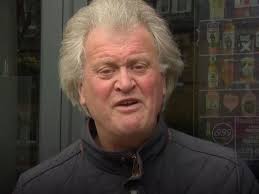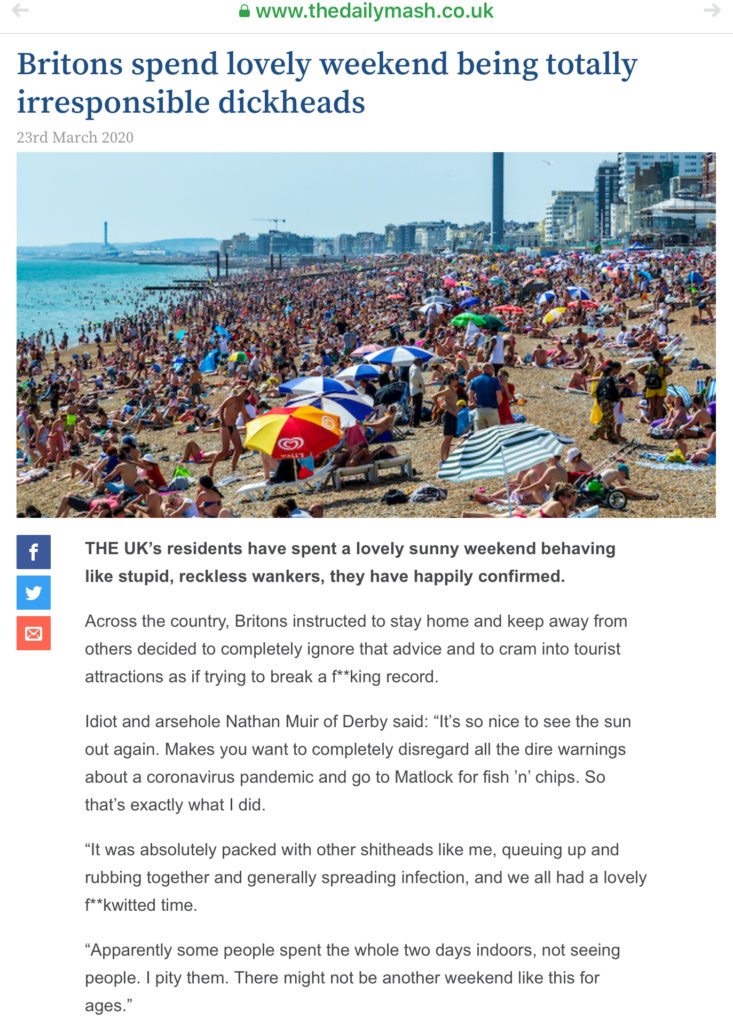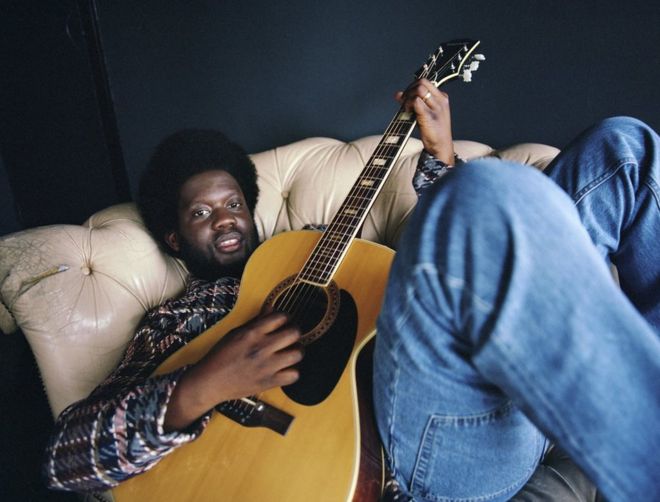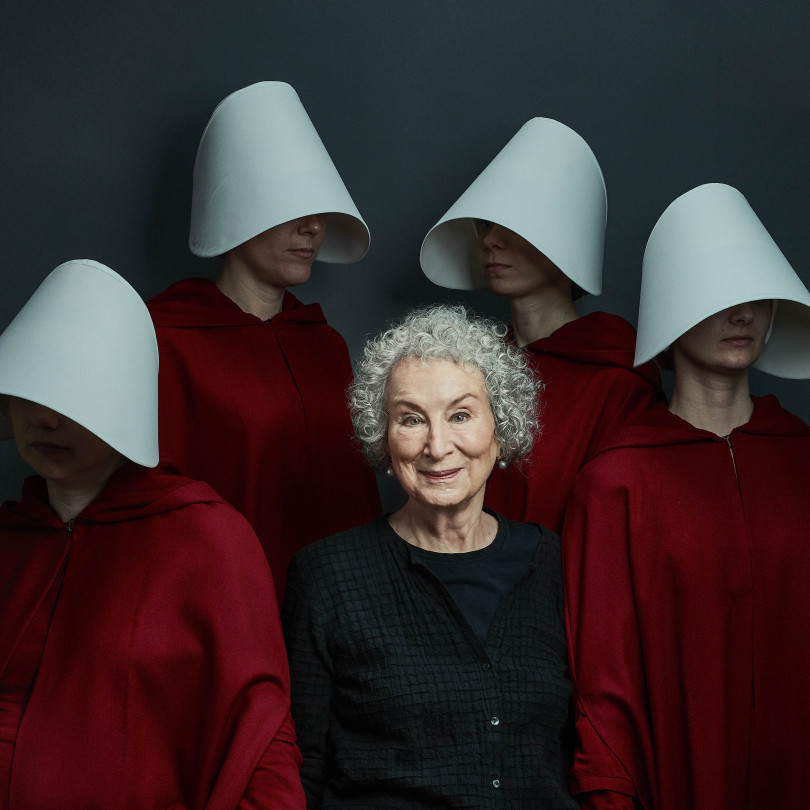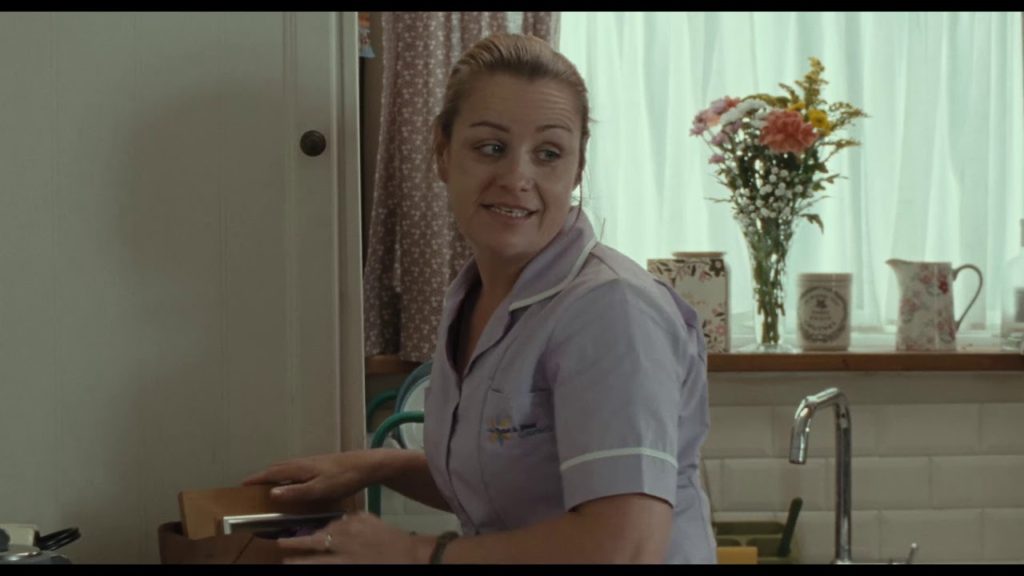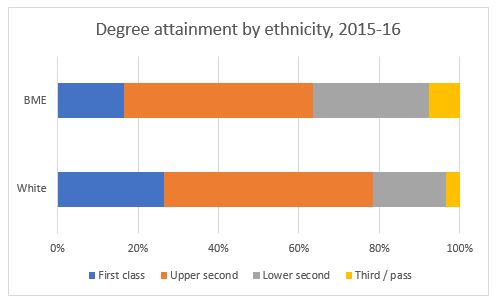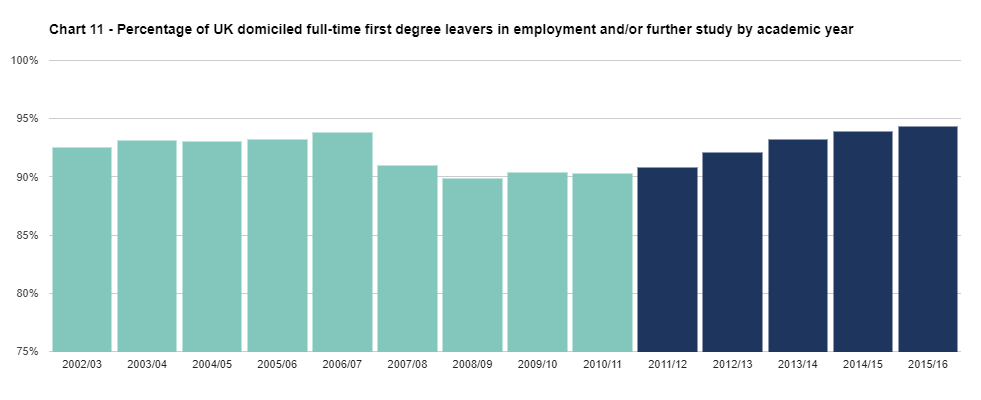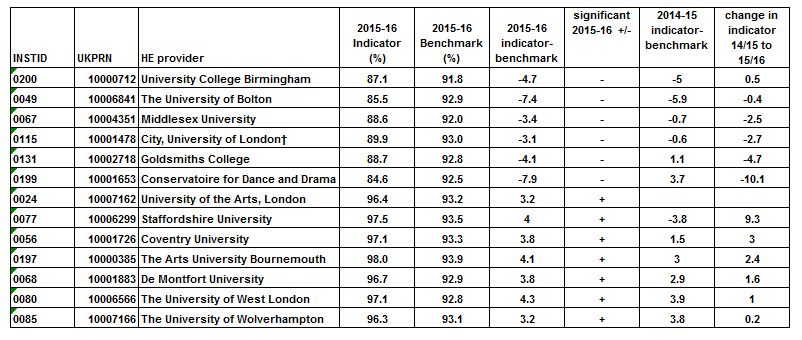Bored.
The disastrous news from this small North Shropshire town, is that Sainsburys have run out of wine, certainly the affordable gutrot (that is German for “good red” of course). When you’ve asked someone else to collect shopping for you, it is unreasonable to ask them to visit all the shops to make sure that you have this essential cooking ingredient. You’d just imagine they’d do it anyway, recognising the importance. Big shout out to my shopping helper! However, I now have all the other ingredients needed to produce haute cuisine (or hot food as we say in English)
Symptoms today: still coughing and not much more to report. Maybe I don’t even have this virus, and am over-reacting, but the whole point of social distancing and isolation is to remove this qualitative judgement. I was sad to hear that a former colleague is much worse than me – in hospital on oxygen and with no one allowed to visit him. This shit is real kids.
There are some fascinating articles being produced, many of which are strongly disagreeing with the Government’s current position of “lockdown”. There seems to be a 100% correlation between these and their organ’s views of Brexit, climate change and the role of the state. This is not to say that they are completely wrong, but I’d rather get facts from named scientists rather than pundits or journalists. Over the next weeks we are going to see more and more articles that argue with the data, the data models used, and the policies pursued by government. What is important to remember is that science provides us with the background information. As more becomes known about mortality, rates of infection, then the predictions that data scientists can make become better (better starting data = better forecasts). The danger is that pundits will look at early predictions, and dismiss all of science, whereas science is really about updating hypotheses based on best data and agreed ideas. Governments then set policies based on their interpretation of best available science.
Also from the sewers of Twitter– complaints that government is hiding or massaging the numbers who have died. All because Public Health England have changed the start and end point of the 24 hour period over which they count, and the time at which they report. Common sense will then explain why the data on Wednesday seemed low and that on Thursday seemed high. I expect this to settle down to its previous exponential curve. It’ll be interesting to see if the data today correlate with the predictions that I and others have modelled. Obviously I’m not sharing that model – I’m not an epidemiologist, I just do numbers for fun.
What will really be interesting, as more data becomes available, we get more experience, and we know more about immunity, is how governments decide what their exit strategy is going to be, as there is a balance between protecting citizens, maintaining civil society and having a functioning economy.
On the plus side, it’s been a productive day, teaching circulation and heart dissection to one student, then helping another to prepare for a test on evidence of evolution. My dad was a vicar, and in sermons looking down form the pulpit he would say “From where I’m standing it seems clear we are descended from monkeys.”

Today’s heroes and zeroes:
Heroes:
Disney + 7 day free trial, meaning unlimited Marvel movies
Dr Who giving us advice in this video https://www.standard.co.uk/showbiz/celebrity-news/dr-who-jodie-whittaker-video-coronavirus-lockdown-a4397591.html
National Theatre broadcasting shows on Thursday evenings, starting with One Man, Two Guvnors.
Zeroes
Pretty much any company not allowing staff to stay away – call centres I’m thinking of you!
#BoredWitless





